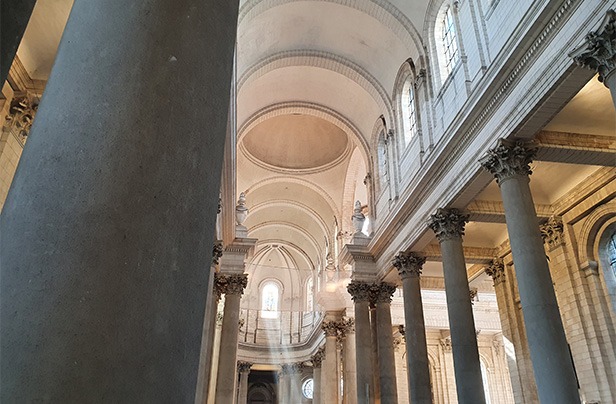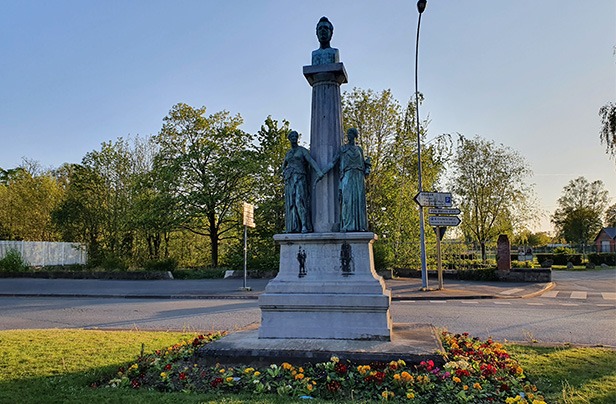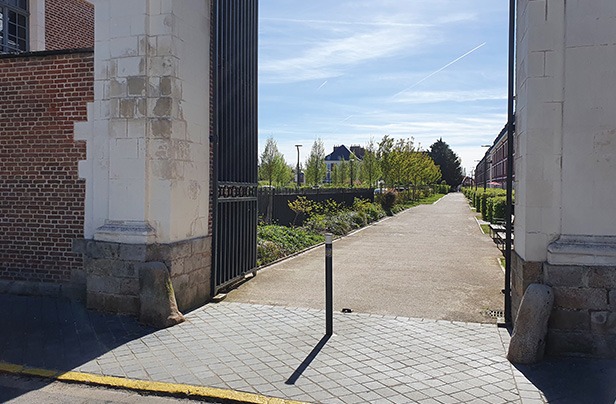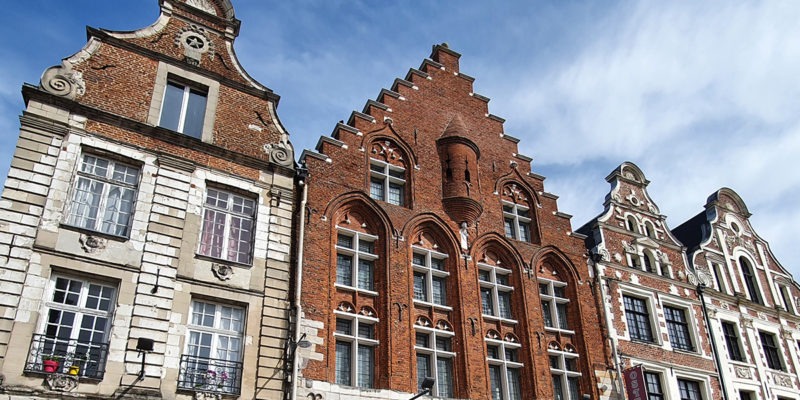After an eighteenth century marked by both renewed urbanization and the ensuing French Revolution, the century ending with the Consulate and the establishment of the Prefect in Arras offered the prospect of a lull for the town. However, the period of Terror mentioned in one of our previous blog entries, forever enshrines the idea that Robespierre and his followers had produced a shock on the population of Arras. With Lebon condemned to death in Amiens in 1795, public executions and a high prison population, there was a need for a return to calm.
From the end of the Terror to Napoleon
Téophile Berlier, sent on a mission to Dunkirk and the Nord-Pas-de-Calais region in general, was given the task of repairing the damage done to the population; he freed prisoners while castigating the Jacobins, but at the same time continued to suspect the aristocrats of plotting. However, there was still a crisis in food prices, and on January 31, 1795, a riot broke out at the Arras grain market due to an attempt to limit municipal bakeries in favor of the emergence of private bakeries. It wasn’t until the good harvest of 1796 and the protection of farmers on the market that the economic situation improved.
Please note: The cathedral was sold in 1798 following the law of separation of Church and State in 1795.
It was dismantled stone by stone. Only the Episcopal residence remained.

The interior of the new cathedral built from 1804
Adhering to the Consulate of 18 brumaire (November 9, 1799) two days later, Arras, like many other towns, remained in a period of turmoil, and the first prefect was expected to restore order. Charles-Claude Poitevin-Maissemy was appointed on March 27, 1800. His aim was to guarantee the safety of people and property, and he took up residence in the former bishop’s palace (now the prefecture). At the time, the Conseil Général still had limited power; it was made up of 24 members appointed for a five-year term. In 1803, Poitevin-Maissemy was disgraced by Bonaparte because of his difficult relations with the diocese of Arras (and Monseigneur de La Tour d’Auvergne). We know that Bonaparte was trying above all to reconcile Catholics to his cause at this time, and it was for this reason that he instigated the creation of the new Arras cathedral, which can still be seen today (Napoleon’s decree of September 11, 1804, completed in 1833) on the remains of the old abbey church.
Napoleon Bonaparte in Arras
Bonaparte came to Arras with his wife Josephine on June 29, 1803. At Porte d’Amiens, an Arc de Triomphe was erected, and a statue of the first consul was erected in front of the town hall. He returned in 1804 via the Porte Baudimont; he reviewed Jean-Andoche Junot ‘s grenadiers (later exiled in 1805 as ambassador to Portugal) at Dainville on August 30.
From the fall of the Empire to the defeat of 1871
With the fall of Napoleon and the proclamation of the new sovereign Louis XVIII, Arras and the Prefect quickly swore allegiance to the King on April 5, 1814. On April 23, 1814, the prefect celebrated peace in Arras with the Duc de Berry. Napoleon’s return from Elba led to his dismissal on May 17, 1815, and his replacement by André Dumont (deputy for the Somme at the National Convention, and later a senior official in the First Empire). In 1815, Arras had fewer than 19,000 inhabitants. The population had been declining since the beginning of the revolutionary era. However, the 18th century saw a revival of social dynamism, particularly among the Arras bourgeoisie, with the Restoration and Napoleon III.
Political liberalism up to Napoleon III
Former Count of Artois, Charles X was acclaimed by the people of Arras in 1827. He came to Arras on September 16 and 17 of that year. However, the ultraroyalists saw the emergence of protests in Arras, and Frédéric Degeorges was one of the town’s most famous oppositional journalists (see rue Frédéric Degeorges, the former street where the CUA was located). Degeorges created a successful Arrage newspaper called “Au soleil de Juillet”. It proposed a lull in the tensions linked to the regime changes, but gradually turned to republican opposition. In 1847-48, the population of Arras was close to 30,000. However, the town was hit hard by the economic crisis, even though lace had been a major source of wealth for the population for the first half-century. Linen thread replaced cotton thread in the 1930s, causing the sector to shift to other towns in the region. Louis Crespel-Dellisse:

Statue of Louis Crespel-Dellisse
(Boulevard Crespel, Arras). Crespel-Dellisse invented machines for the local sugar industry. Halette went on to become a true specialist in steam engines, diversifying their uses (sugar mills, oil mills, engines for the French navy, locomotives, etc.). On the political-editorial front, the newspaper “Le Progrès” replaced “Le Propageur”, and Degeorges was subjected to numerous trials until 1848. The paper’s program included the defense of freedoms, secularism, religious tolerance and education for boys and girls. On February 29, 1848, Frédéric Degeorges became general commissioner of the provisional government. At the 1848 Constituent Assembly, he was elected deputy. The prefecture of Pas-de-Calais is given to Édouard Degouve Denuncques (a stadium bears his name to this day, and is home to the RCA soccer club). However, with the coup d’état of December 2, 1851, Degeorges was defeated in the 1852 legislative elections and died in 1856.
Napoleon III in Arras
The Bonapartist regime had a strong presence throughout the département, including in Arras. “Napoleon the Lesser”, as Victor Hugo liked to call him, visited the town for two days in September 1853 and again in August 1867. During this second visit, a pyramid of grain was built in the center of the Grand’Place. Even today, elements of Bonapartism can be seen here and there in Arras, such as the N framed in the statues of Law and Justice at the Palais de Justice. Right up to the end of the Second Empire, the food industry was in the ascendancy in Arras. The Crespel company still existed at this time (it had up to 9 operations in the Pas-de-Calais department). Other industrial sectors failed to keep pace, and Arras became a small prefecture north of Paris. An administrative capital with the development of the tertiary sector, the town was also home to a large garrison of soldiers, whose barracks can still be seen at the Citadelle and in the Schramm district.

Mayor
Hippolyte Plichon (1847-1870) urbanized the town and built what was long known as the abattoirs (today known as Les jardins du Val de Scarpe). The grain market operates as never before. Sedan, however, gives way to the end of the era, and the Third Republic is observed differently by the people of Arrage.
X.D.
